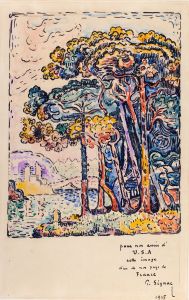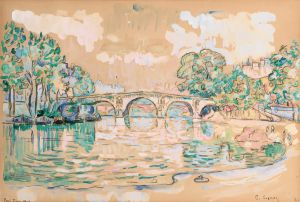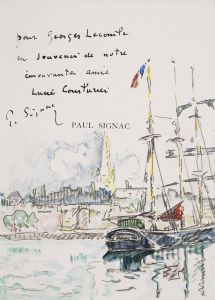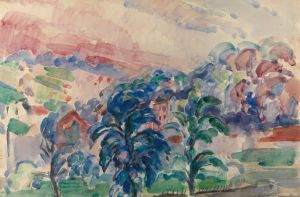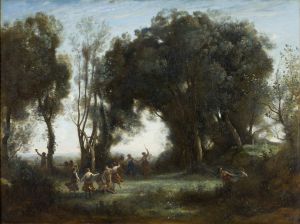
Les Andelys. Matin. Été
A hand-painted replica of Paul Signac’s masterpiece Les Andelys. Matin. Été, meticulously crafted by professional artists to capture the true essence of the original. Each piece is created with museum-quality canvas and rare mineral pigments, carefully painted by experienced artists with delicate brushstrokes and rich, layered colors to perfectly recreate the texture of the original artwork. Unlike machine-printed reproductions, this hand-painted version brings the painting to life, infused with the artist’s emotions and skill in every stroke. Whether for personal collection or home decoration, it instantly elevates the artistic atmosphere of any space.
Paul Signac's painting Les Andelys. Matin. Été (translated as Les Andelys. Morning. Summer) is a notable example of the artist's work in the Pointillist style, a technique he helped pioneer alongside Georges Seurat. The painting depicts a serene riverside scene in Les Andelys, a small town located in the Normandy region of France. Known for its picturesque landscapes and historical significance, Les Andelys provided Signac with a rich source of inspiration for his exploration of light, color, and atmosphere.
Created in 1886, Les Andelys. Matin. Été reflects Signac's commitment to the principles of Neo-Impressionism, a movement that sought to apply scientific theories of color and optics to painting. Using small, distinct dots of pure color, Signac constructed the composition to achieve a luminous and harmonious effect when viewed from a distance. This technique, known as Pointillism or Divisionism, was central to the Neo-Impressionist approach and marked a departure from the more spontaneous brushwork of Impressionism.
The painting captures a tranquil morning scene during the summer season, with the Seine River flowing gently through the landscape. The composition is characterized by its balanced arrangement of natural elements, including the river, trees, and sky, as well as its vibrant yet controlled color palette. Signac's meticulous application of color dots creates a sense of movement and light, evoking the peaceful atmosphere of the French countryside.
Paul Signac was deeply influenced by the scientific theories of color advanced by figures such as Michel Eugène Chevreul and Ogden Rood. These theories emphasized the optical blending of colors, where the viewer's eye mixes the individual dots of pigment to create a cohesive image. In Les Andelys. Matin. Été, this technique is evident in the interplay of warm and cool tones, which convey the changing light and temperature of a summer morning.
Signac's choice of Les Andelys as a subject reflects his broader interest in depicting the natural beauty of France's rivers and coastal regions. Throughout his career, he traveled extensively to paint en plein air, capturing the unique qualities of different locations. While Les Andelys. Matin. Été is one of many works inspired by his travels, it stands out as an early example of his mastery of the Pointillist technique.
Today, Les Andelys. Matin. Été is recognized as an important work within Signac's oeuvre and the broader Neo-Impressionist movement. It exemplifies the artist's dedication to exploring the interplay of light, color, and form, as well as his innovative approach to painting. The work continues to be studied and appreciated for its technical precision and its contribution to the development of modern art.





